 W
WHeinrich Blum was a Czech architect.
 W
WAdolf Böhm was a Bohemian-born Zionist historian and leader. He was murdered in the Nazi euthanasia programme at the Hartheim Euthanasia Centre in 1941.
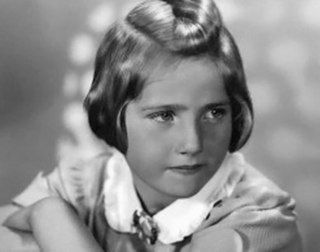 W
WHanička "Hana" Brady was a Czechoslovakian Jewish girl murdered in the gas chambers at German concentration camp at Auschwitz, located in the occupied territory of Poland, during the Holocaust. She is the subject of the 2002 non-fiction children's book Hana's Suitcase, written by Karen Levine.
 W
WLudwig Czech was a German-speaking Jewish Czech member of the German Social Democratic Workers' Party in the Czechoslovak Republic who actively participated in the Czechoslovak politics of the so-called First Republic. He was a Minister of Social Care (1929–1934). Minister of Public Affairs (1934–1935), Minister of Public Health and Physical Training (1935–1938). He died in the Theresienstadt Ghetto in 1942, officially having died of pneumonia, heart failure, and edema of the lungs.
 W
WBedřich Fritta was a Czech-Jewish artist and cartoonist. Before the war, Fritta worked as an illustrator and graphic designer in Prague under the pseudonym Fritz Taussig. In the 1930s, he devoted himself to political caricature and provided input for the satirical magazine Simplicus.
 W
WPetr Ginz was a Czechoslovak boy of partial Jewish background who was deported to the Theresienstadt concentration camp during the Holocaust. He was murdered at the age of sixteen when he was transferred to Auschwitz concentration camp and gassed to death upon arrival. His diary was published after his death.
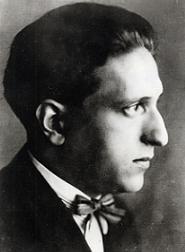 W
WPavel Haas was a Czech composer who was murdered during the Holocaust. He was an exponent of Leoš Janáček's school of composition, and also utilized elements of folk music and jazz. Although his output was not large, he is notable particularly for his song cycles and string quartets.
 W
WDr. Karel Hartmann was a Czechoslovak ice hockey player who competed in the Olympic games in 1920. He was a member of the national team that won the bronze medal in Antwerp.
 W
WOskar Hekš was a Czechoslovak long-distance runner.
 W
WOttilie "Ottla" Kafka was the youngest sister of Franz Kafka. His favourite sister, she was probably also his closest relative and supported him in difficult times. Their correspondence was published as Letters to Ottla.
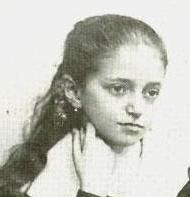 W
WValerie "Valli" Kafka Pollak was the second oldest sister of Franz Kafka.
 W
WPeter Kien was a Jewish artist and poet active at the Theresienstadt concentration camp. He died at the age of twenty-five.
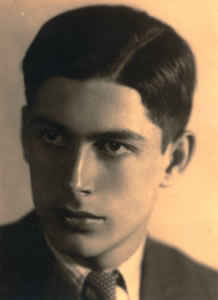 W
WGideon Klein was a Czech pianist, classical music composer, educator and organizer of cultural life at Theresienstadt concentration camp.
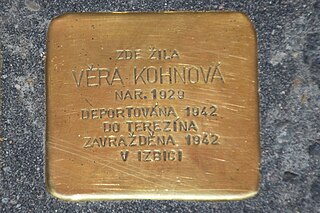 W
WVěra Kohnová was a young Czechoslovakian Jewish diarist who wrote a diary about her feelings and about events during the Nazi occupation. Her diary was published in 2006.
 W
WErnst Königsgarten, also known as Arnošt Königsgarten was an Austrian businessman and fencer. He was the youngest member of the Austrian team in the Olympic 1906 Intercalated Games in Athens in four competitions, finishing sixth with the sabre. In 1907, he was one of the co-founders of the Wiener Fechtklub , trained in the fencing academy of Luigi Della Santa and sat on the board of the Austrian Fencing Association and the Wiener AC. He fled Vienna after the Anschluss and returned to his hometown of Brno, but was deported by the Nazis and died in Theresienstadt.
 W
WHans Krása was a Czech composer, murdered during the Holocaust at Auschwitz. He helped to organize cultural life in Theresienstadt concentration camp.
 W
WFritz Löhner-Beda, born Bedřich Löwy, was an Austrian librettist, lyricist and writer. Once nearly forgotten, many of his songs and tunes remain popular today. He was murdered in Auschwitz III Monowitz concentration camp.
 W
WFrantišek Mořic Nágl was a Czech landscape and genre painter of Jewish ancestry.
 W
WLudwig Pollak was an Austro-Czech classical archaeologist, antiquities dealer, and director of the Museo Barracco di Scultura Antica in Rome. He is perhaps best known for discovering in 1906 the missing right arm of Laocoön in the famous ancient Roman sculpture Laocoön and His Sons.
 W
WGrete Reiner was a Czech-German magazine editor and writer, who is notable for being the first translator of The Good Soldier Schwejk, the antimilitarist satirical novel by Jaroslav Hašek.
 W
WRafael Schächter, was a Czechoslovak composer, pianist and conductor of Jewish origin, organizer of cultural life in Terezín concentration camp.
 W
WMalva Schalek, aka Malvina Schalková, was a Czech-Jewish painter. Trained in Prague, she went on to work in Vienna as a painter. From 1942 to 1944 she was imprisoned in the Theresienstadt concentration camp. In 1944 she was moved to the Auschwitz concentration camp, where she died. Many of her works are held in the Ghetto Fighters' House in Israel.
 W
WWalter Serner was a German-language writer and essayist. His manifesto Letzte Lockerung was an important text of Dadaism.
 W
WEmil Starkenstein was a Czech-Jewish pharmacologist and one of the founders of clinical pharmacology. He was killed in the Mauthausen-Gusen concentration camp along with a few hundred refugees from Amsterdam after an incident in which a Dutch Jew resisted a Nazi patrol.
 W
WRobert Stricker was a Jewish Austrian politician.
 W
WIlse Weber née Herlinger, was born in Witkowitz near Mährisch-Ostrau. A Jewish poet, she wrote in German, most notably songs and theater pieces for Jewish children. She married Willi Weber in 1930. She was voluntarily transported to Auschwitz with the children of Theresienstadt and killed in the gas chambers, along with her son, Tommy. Her most popular book was "Mendel Rosenbusch: Tales for Jewish Children" (1929).